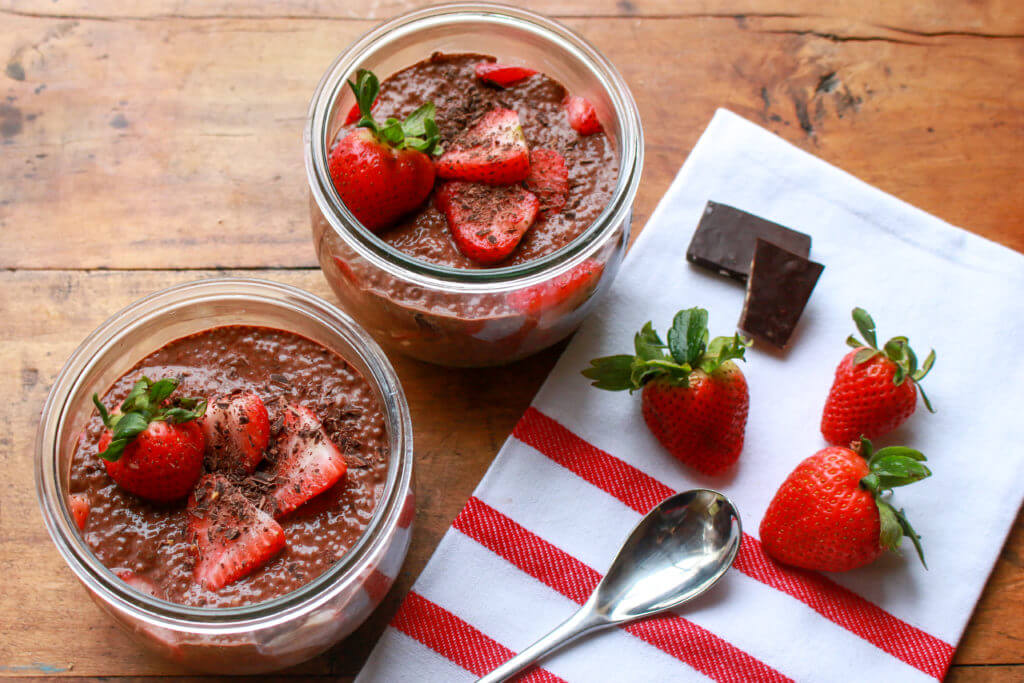Soy is a standard nutrient-rich meals, but it’s so misunderstood! City legends abound on soyfoods, which is why I’m busting myths on soy well being dangers right this moment.
Ah, soy. An historic, conventional healthful meals in lots of cultures, but it’s broadly maligned within the U.S.! After I communicate in public, it’s a given I’ll get questions concerning the dangers of consuming soy inside a wholesome, plant-based eating regimen. In actuality, soy is likely one of the most generally studied meals of all time, and it’s considered one of nature’s most good meals. One cup of cooked soybeans affords 57% DV protein, 41% DV fiber, 49% DV iron, 18% DV calcium, 1,029 mg omega-3s, not less than 18% DV of twelve different important nutritional vitamins and minerals, in addition to different phytochemicals (saponins, phytosterols, and isoflavones). As well as, quite a few research have demonstrated many well being advantages linked with consuming extra soyfoods. Regardless of all of these well being advantages, soy myths and concrete legends abound. When entered into Google search, “soy risks” yields 1,200,000 outcomes. Why is that this the case? That’s precisely what I’m uncovering as I bust the highest 5 soy myths right this moment.

You could find so many pseudo consultants proclaiming the hazards of consuming soy on the Web and social media. Paleo Leap calls soy “a very dangerous supply of energy” and goes on to assert soy will mess up your thyroid, metabolism, and hormone ranges. On YouTube, yow will discover “diet consultants” calling soybean “harmful and inflammatory junk”. The Weston A. Worth Basis calls soy “extraordinarily poisonous”, and claims it may trigger untimely sexual growth in ladies and delayed growth in boys. So, with all of this conflicting info, what is basically the reality behind soy?

What Are Soyfoods?
First cultivated in China in 1100 BC, soy has been consumed often in Asian populations for hundreds of years. In Japan—a rustic with low breast and prostate most cancers charges and excessive life longevity—it’s included within the eating regimen each day. Even exterior of the Asian neighborhood, vegetarians have relied on this top quality protein for many years, and far of the present scientific analysis exhibits soy is linked with decreased ldl cholesterol, decrease danger of coronary heart illness, attainable discount of scorching flashes, and decreased danger of breast and prostate most cancers. Consuming soy is likely one of the many the reason why vegetarians have, on common, a greater state of well being than those that devour meat. So, with a lot info to grasp and digest, let’s begin by taking over a few of right this moment’s prime soy myths feeding into the worry of consuming soy. Whilst you’re at it, take a look at this interview with Mark Messina as we discuss soy and well being.

Busting 5 Myths on Soy Well being Dangers

Delusion #1: Soy Causes Breast Most cancers
This stems from the confusion over phytoestrogens and previous analysis research, which has led to breast most cancers fears amongst common customers and well being care professionals. Scientifically, estrogen has been linked with an elevated danger of breast most cancers, as there estrogen receptors in breast tissue. When the estrogen snaps in, it promotes breast tumors. Within the Nineteen Nineties, researchers raised questions on soy and phytoestrogens by means of animal experiments achieved, which confirmed blended outcomes. The essential reality to notice is that phytoestrogens usually are not estrogen, and act very otherwise in people than estrogen.
There are methods to make use of your eating regimen to assist scale back the dangers for most cancers and, in keeping with the American Most cancers Society, considered one of them is to devour entire soy meals, as these are anti-inflammatory, and supply antioxidant properties that scale back most cancers progress. In actual fact, isoflavones are one of many many phytochemicals present in soy that will play position in lowering most cancers danger. Analysis carried out on laboratory, animal, and human observational research counsel that soy might scale back danger of cancers, together with breast, prostate, ovarian, and uterine, and huge research in ladies with excessive soy-food consumption present decrease danger of breast and endometrial most cancers.
It has been proven that isoflavones can block stronger pure estrogens from binding to any estrogen receptor, cease formation of estrogens in fats tissue, and stimulate manufacturing of a protein that binds estrogen in blood. A latest examine from the Breast Most cancers Remedy confirmed information from 14 research that discovered ladies in Asian international locations who ate probably the most soy isoflavones had a 24% decrease danger of breast most cancers. Whereas most cancers safety must be confirmed in human medical trials, human research sponsored by NCI are beneath method. Some research counsel the impact of soy on breast most cancers danger will depend on age when consumed. Excessive soy consumption by younger ladies when breast tissue is growing and estrogen ranges are excessive might supply safety.
At the moment, there are two positions on soy consumption: the AICR states that soy meals are protected—even for breast most cancers survivors—in reasonable quantities, and ladies can devour one to 2 (some research present even as much as 3) servings per day. The ACS states that reasonable consumption is protected for most cancers prevention and breast most cancers survivors, though they advocate entire soyfoods over dietary supplements. One serving of soy averages 7 g protein and 25 mg isoflavones.

Delusion #2: Soy Is Not Sustainable
There’s numerous debate surrounding GMOs and fashionable farming, and this impacts soy’s repute amongst customers. Nevertheless, most soy-foods are non-GMO, together with soymilk and dairy alternate options, tofu, tempeh, and edamame. The U.S. Dept. of Commerce calculates U.S. manufacturing of soy protein for human consumption barely lower than 1% whole soybean manufacturing, with the remaining going primarily to animal feed (Not together with entire non-GMO soybeans utilized in manufacturing of soymilk, tofu, and different merchandise similar to edamame, as this information just isn’t collected). AHS-2 discovered the vegan carbon footprint 42% decrease than non-vegetarians, vegetarian 28% decrease, pescovegetarian 24% decrease, semi-vegetarian about 20% decrease, and the EWG Meat Eater’s Information in contrast 20 completely different meals solely to search out that tofu had a a lot decrease influence on GGEs than different animal proteins, similar to lamb and beef. This goes to point out that animals are inefficient protein producers, and that soy is extra effectively produced when it comes to power, water and land use.

Delusion #3: Soy Is Not Good For The Planet
As freshwater sources develop into strained and meals manufacturing turns into compromised, manufacturing of meals will probably be measured by quantity of water wanted to provide high-quality protein. Soybeans are extra environment friendly protein supply per cubic meter of water utilized in manufacturing, and contemplating the quantity of fossil power inputs (similar to gasoline, fertilizer, pesticides, transportation) required to provide soybeans, soy-based meals ship the biggest variety of energy and highest protein density for human consumption per quantity of fossil gasoline enter.

Delusion #4: Soy Feminizes Males
In line with a examine carried out by Fertil Steril, quite a few human research present males who consumed 40 – 70 mg/day soy isoflavones from 1 – 2 servings of soyfoods or soy dietary supplements had no vital modifications in testosterone ranges. Populations consuming excessive quantity of soyfoods don’t present elevated charges of fertility points, and an evaluation of 14 research by the American Journal of Medical Diet confirmed elevated soy consumption resulted in 26% discount in prostate most cancers danger.

Delusion #5: Soy Is Not Protected For Kids
Really, kids have been consuming soy merchandise in Asia safely for hundreds of years, and there aren’t any apparent dangerous results. The really helpful protected dose for youngsters is as much as two servings per day of entire meals. In line with Arkansas Kids’s Diet Middle, a long run examine of 600 kids (3 mo – 14 yr) was carried out evaluating breast milk to soy and dairy formulation. Soy formula-fed youngsters developed at comparable charges, and had no estrogenic results throughout growth of reproductive organs throughout first 4 months. Soy is on the High 8 Meals Allergen listing, nonetheless allergic reactions are nonetheless comparatively uncommon; solely 0.4% of all kids beneath age of 18 are allergic. Allergic response not deadly like peanuts.


